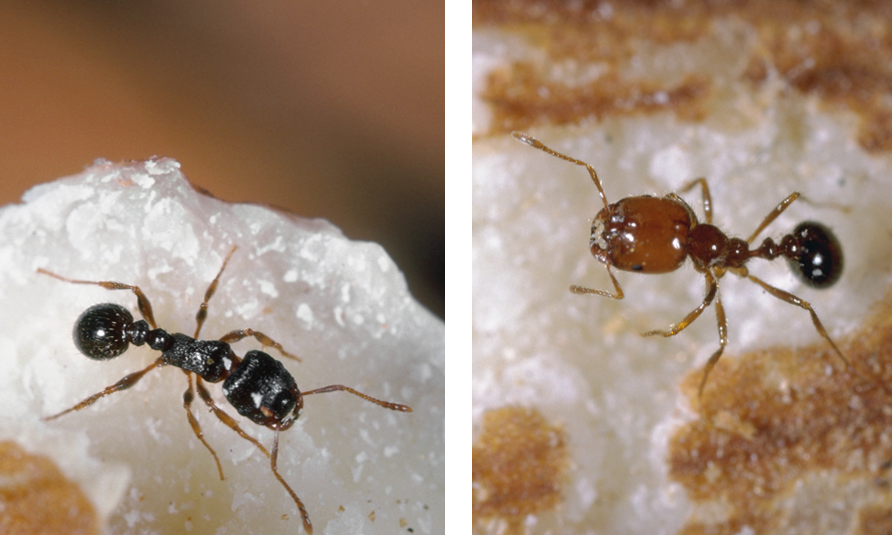Franz Niederholzer, UCCE Farm Advisor, Colusa and Sutter/Yuba Counties
Protein feeding ants can cause significant nut damage between shaking and pickup (see Table 1). The longer nuts are on the orchard floor after shaking, the greater the risk of ant damage. In 2020, ant damage was up over previous years; based on conversations with PCAs and industry reps. These damage increases may have been linked to extended nut drying time under smoky skies with reduced solar radiation (see Figure 1). The fire risk is high again this year.
Table 1. Percent damage by southern fire ants to almonds on the ground in an almond orchard (UC IPM).
| Colony entrances per 5,000 sq. ft. April -- May | Days nuts are on the ground | ||||
| 4 | 7 | 10 | 14 | 21 | |
| 15 | 0.9 | 1.6 | 2.1 | 3.1 | 4.9 |
| 45 | 1.4 | 2.3 | 3.2 | 4.7 | 7.0 |
| 185 | 2.0 | 3.6 | 5.0 | 7.0 | 11.1 |

Ant bait materials, where needed and used properly, deliver inexpensive and effective ant control. Timing and best use practices are critical to successful ant control.
Only protein feeding ants (pavement or southern fire ants) feed on almonds. Other ant species can be beneficial in almond production as they may help control pests (for example, grey ant feeding on peach twig borer larvae). Check orchards before treating to make sure that protein feeding ants are present. See monitoring and identification details on the UC IPM site.

Photos 1& 2. Protein feeding ants. Pavement ants (left) are dark brown, and are covered in coarse hairs. Southern fire ants (right) are characterized by an amber head and thorax and a black abdomen.
Several different active ingredients are available in bait form for ant control. Best timing of different products for best results varies with product. Clinch® or Esteem® Ant Bait should go out early (4-8 weeks ahead of shaking, depending on the material) as it takes time for the product to reduce ant activity. Altrevin® is a short PHI material that provides rapid knock down of ant activity but provided fewer weeks of ant control than Clinch® in UC research conducted by David Haviland, UCCE Entomology Advisor in Kern County. Consult with your PCA for the timing and material(s) that have the best fit for your orchard.
How baits are used affects how well they work. Ant bait materials work because ants are attracted to the soybean oil in the bait. Rancid soybean oil will not attract ants, and oil in bags open for only a week may be rancid. For best results, buy new material and use it quickly. Regardless of the material used, wet bait is less effective than dry material. Spread bait on dry soil several days ahead of irrigation, especially sprinkler irrigation, or wait a day or two after irrigation for best results.


Leave a Reply